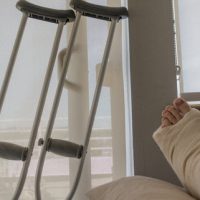Nursing Home Falls: A Closer Look

In many cases, falls send people to nursing homes and keep them there much longer than anticipated. Falls account for about a third of nursing home admissions, and two-thirds of residents fall at a long-term care facility. These incidents cause physical and emotional injuries which are usually permanent. Broken bones and other physical injuries mostly heal, but these victims usually permanently lose some mobility. Emotionally, the crippling fear of another fall generally hunts these victims for the rest of their lives.
Because nursing home fall injuries are so serious, and because these victims are so vulnerable, a Sugar Land nursing home neglect lawyer can usually obtain substantial compensation in these matters. This compensation usually includes money for economic losses, such as medical bills, and noneconomic losses, such as pain and suffering. These cases are very complex, partially because out-of-state conglomerates usually own Fort Bend County nursing homes.
Building a Case
As mentioned, nursing home residents are vulnerable individuals. Therefore, Texas law usually protects them in special ways. At a nursing home, this special protection is generally a duty of reasonable care.
In this context, the duty of reasonable care is twofold. First, owners must ensure the premises are safe by design. Two- or three-step staircases are very attractive design features. But they’re also hazards for older adults who don’t see well and stumble easily.
Second, owners must inspect their premises and promptly address fall injury hazards, such as loose handrails and cracked sidewalks. A “Caution” sign doesn’t fulfill the legal requirements of the duty of care. Actual removal is required.
A “Caution” sign may be sufficient if the victim was a licensee (person who had permission to visit the nursing home but didn’t benefit the owner financially or non financially). A few nursing home visitors may be licensees. But usually, they’re invitees (permission and benefit), so the duty of reasonable care applies.
Sometimes, visitors pay bills for residents. Other times, visitors lift residents’ spirits, therefore benefitting the owner nonfinancially.
Additionally to obtain compensation, a Missouri City personal injury lawyer must prove, by a preponderance of the evidence (more likely than not) the owner knew about, or should have known about, the hazard. Evidence on this point could be direct or circumstantial.
Possible Defenses
The open and obvious defense may be the most common defense in fall cases, at least in general. However, this defense often doesn’t apply to nursing home fall matters.
Under the law, nursing home owners aren’t liable for damages if an open and obvious hazard caused a fall. However, many older people don’t see well, especially in dim light. So, an open and obvious hazard to a younger person is an invisible hazard to an older person.
Furthermore, many nursing home residents have limited mobility, possibly because of a previous fall. When these individuals stumble, they’re unable to regain their balance, and they fall. In other words, a minor hazard could cause a serious injury.
Comparative fault is a watered-down version of the open and obvious defense. Sometimes, comparative fault is basically a failure to watch where you’re going. Other times, it involves a “Caution Wet Floor” or other warning sign.
If a failure to look out for personal safety or a failure to heed a warning sign (and these are pretty big “ifs,” considering the vision and balance issues discussed above) substantially caused a fall, the court could reduce or eliminate compensation in the case, depending on the relative percentage of fault (50-50, 80-20, etc.).
Work With a Thorough Fort Bend County Attorney
Injury victims are entitled to significant compensation. For a confidential consultation with an experienced personal injury attorney in Missouri City, contact the Henrietta Ezeoke Law Firm. The sooner you contact us, the sooner we start working for you.
Source:
nfsi.org/nfsi-research/quick-facts/
